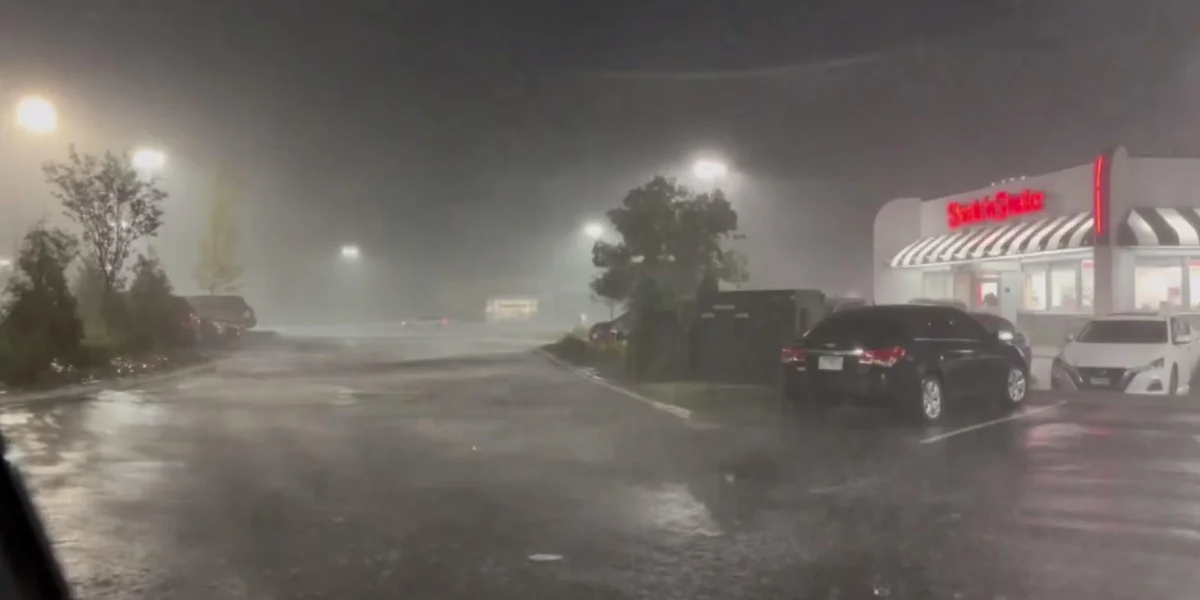Napa County, California & Deschutes County, Oregon — Thousands of residents across Northern California and central Oregon were forced to flee their homes this weekend as wildfires rapidly spread through dry, hot terrain. Fire officials say the blazes are threatening hundreds of structures, prompting mass evacuations and raising concerns about worsening fire conditions in the coming days.
Pickett Fire Threatens Napa County Wine Country
In California, the Pickett Fire has already scorched nearly 10 square miles (26 square kilometers) of Napa County. As of Sunday, containment stood at just 11%, according to the California Department of Forestry and Fire Protection (Cal Fire).
The blaze has forced 190 residents to evacuate immediately, with another 360 under evacuation warnings. Fire officials say approximately 500 structures remain threatened near Aetna Springs and Pope Valley, an area about 80 miles north of San Francisco.
Jason Clay, spokesperson for Cal Fire, explained that while cooler conditions briefly helped on Sunday, the risk is far from over. “That’s been a driving factor in the afternoons since we’ve seen the fire activity pick up for the last three days,” Clay said, noting that dropping humidity and increasing winds could worsen fire behavior.
The Pickett Fire ignited Thursday in rugged terrain, a region scarred by the devastating Glass Fire of 2020, which destroyed over 1,500 structures and burned across 105 square miles in Napa and Sonoma counties. Unlike the 2020 blaze, which spread rapidly due to strong winds, this year’s fire is fueled by dense, dry vegetation and dead trees left behind from earlier burns.
More than 1,230 firefighters supported by 10 helicopters are working to contain the flames. The cause remains under investigation.
Flat Fire Expands in Oregon
Meanwhile, in central Oregon, the Flat Fire continues to grow at an alarming pace. Stretching across 34 square miles (88 square kilometers) in Deschutes and Jefferson counties, the fire has already placed about 4,000 homes under evacuation notices, with 1,000 residents ordered to leave immediately, according to the Oregon State Fire Marshal’s Office.
The terrain has posed significant challenges for firefighters, with flames racing through canyon areas filled with dry grasses and juniper trees. Jason Carr, spokesperson for the Deschutes County Sheriff’s Office, described the landscape as particularly vulnerable to fire spread.
Adding to the risk, forecasters are monitoring isolated thunderstorms in Southern Oregon that could drift northward, potentially sparking new blazes or causing the existing fire to jump containment lines. “If we get thunderstorms that roll through, it can cause the fire to jump lines,” Carr warned, noting that strong downdrafts could push flames in multiple directions.
Extreme Heat Complicates Firefighting Efforts
The fires come as much of the Western U.S. continues to suffer under a dangerous heat wave. Temperatures soared into the triple digits in parts of Washington, Oregon, California, Nevada, and Arizona over the weekend. The extreme heat hospitalized several residents, further complicating emergency response.
Cal Fire’s Jason Clay emphasized that while Napa County saw highs around 94 degrees (34 Celsius) on Sunday, the expected low humidity and gusty winds could again increase fire activity. Officials say firefighters are focusing on building containment lines before conditions worsen.
Read Also: Fall-Like Cooldown to Sweep Over 200 Million Across Central and Eastern U.S. This Week
Other California Fires
Elsewhere in California, crews are making progress on the Gifford Fire, the state’s largest blaze of 2025. Burning across 206 square miles (534 square kilometers) in San Luis Obispo and Santa Barbara counties, the fire is now 95% contained, according to state officials. The cause remains under investigation.
The Role of Climate Change
While investigators continue to search for the causes of the latest wildfires, scientists caution that the broader conditions fueling these disasters are worsening. Human-driven climate change—caused by the burning of fossil fuels—has led to longer, hotter summers, increased drought, and more destructive wildfire seasons.
Experts warn that rising global temperatures are drying out vegetation and making wildfires harder to predict and contain. Although not every fire can be directly attributed to climate change, the increased frequency and intensity of recent blazes point to a troubling trend.
Communities Brace for Uncertain Days Ahead
For now, displaced families in both states remain uncertain about when they might return home. Officials in Napa County are working to confirm how many structures have been destroyed in the Pickett Fire, while Oregon crews continue battling flames in neighborhoods under evacuation.
Clay said firefighting support has come from across California, underscoring the severity of the crisis. “Support from all up and down California has been critical to our efforts,” he noted.
As evacuation centers fill and resources stretch thin, residents are reminded to remain prepared, heed evacuation orders, and stay alert to shifting fire conditions.
What do you think about the growing wildfire threat across the West Coast? Should states invest more in prevention efforts or focus on rapid response systems? Share your thoughts in the comments on ibwhsmag.com.


 by
by 

